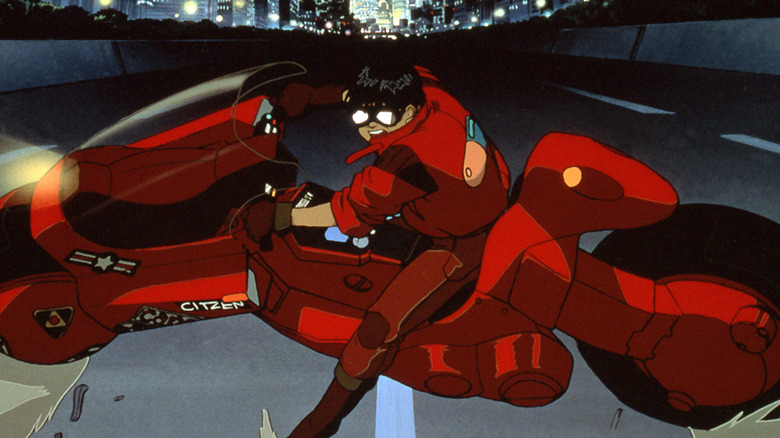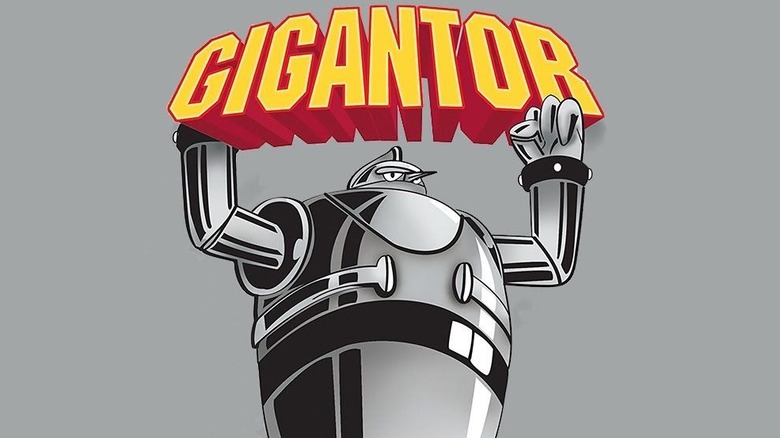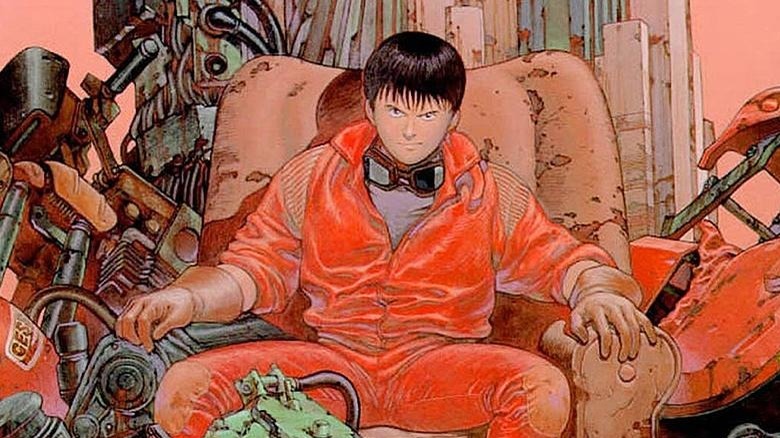The Forgotten Anime Classic That Inspired Akira
If you're an anime fan, you've no doubt heard of "Akira." Katsuhiro Ôtomo's manga spawned a 1988 animated film that has since become a cornerstone of the cyberpunk genre, with many TV shows and movies recreating the iconic "bike slide" from protagonist Shotaro Kaneda. Seriously, animators love that bike slide.
In an interview with Empire, Ôtomo discussed his influences for "Akira" and the process of crafting the film (which he co-wrote and directed, in addition to writing and illustrating the manga). One of his major inspirations was Tokyo in the 1970s; the post-war reconstruction and political movements ended up shaping many of "Akira's" characters. Even the final confrontation between Kaneda and Tetsuo takes place in the ruins of the Olympic sports stadium where the 1964 Olympics were held. Ôtomo explained:
"There were so many interesting people ... Student demonstrations, bikers, political movements, gangsters, homeless youth ... All part of the Tokyo scene that surrounded me. In Akira, I projected these elements into the future, as science-fiction."
As big as the Olympics were, however, they weren't the primary influence for the film. Ôtomo revealed that an anime he watched in his youth had a massive impact on Akira's story — in more ways than one.
Bigger Than Big, Stronger than Strong
The anime series that Ôtomo credits for inspiring "Akira" is "Gigantor," which was based on the manga "Tetsujin 28-gō." Ôtomo admits that the characters and story of "Akira" owe a great deal to "Gigantor:"
"Heck, considering Akira's basic concept is that a secret weapon from a past war is resurrected, you could say that Akira was based on Tetsujin 28."
"Gigantor" does indeed feature a secret weapon — the titular robot himself, which was developed by Japan to fight in World War II; "Akira," meanwhile, features the use of psychic-powered beings as weapons. And in the same way that Ôtomo drew influence from post-reconstruction Japan while writing "Akira," "Gigantor" creator Mitsuteru Yokohama drew upon his childhood memories of World War II while writing. The protagonists of both stories even share the surname Kaneda. This only serves to further my theory that giant robots make everything better — and in this case, they lead to the birth of an anime classic.
A Marvelous Connection
Another major influence for "Akira" was American comic books, which Ôtomo had grown up reading. Speaking to Empire, he discussed how the manga version was structured to resemble America comics, saying, "I wanted the page-count, the contents, the paintings, everything about it to create a deep, full, American comic-style world." Marvel Comics would even release a colorized version of "Akira" to coincide with the film's release, with then-editor-in-chief Archie Goodwin picking up on its potential appeal to American audiences:
"Akira seemed to fit the tastes of American audiences ... Ôtomo was dealing with a science-fiction story, which they like, but he was also dealing with beings with paranormal powers, which is a popular theme in American comics and science-fiction now."
Ironically, Warner Bros. has been struggling to get a live-action "Akira" adaptation off the ground for years, even hiring Taika Waititi — who is no stranger to the world of comics, having helmed "Thor: Ragnarok" – to take a crack at it (though Waititi soon departed the project to direct "Thor: Love and Thunder"). Fortunately, the animated "Akira" has stood the test of time.


